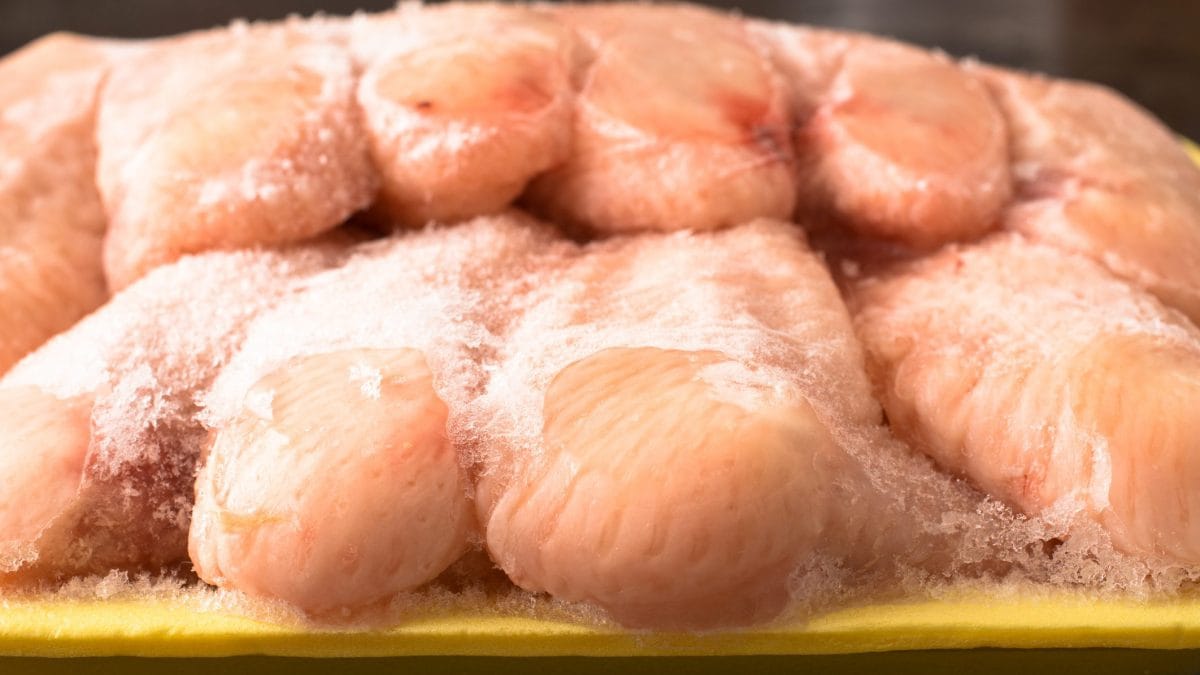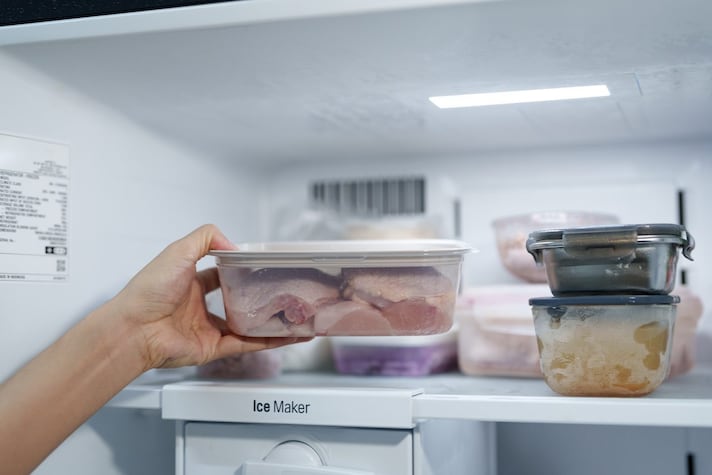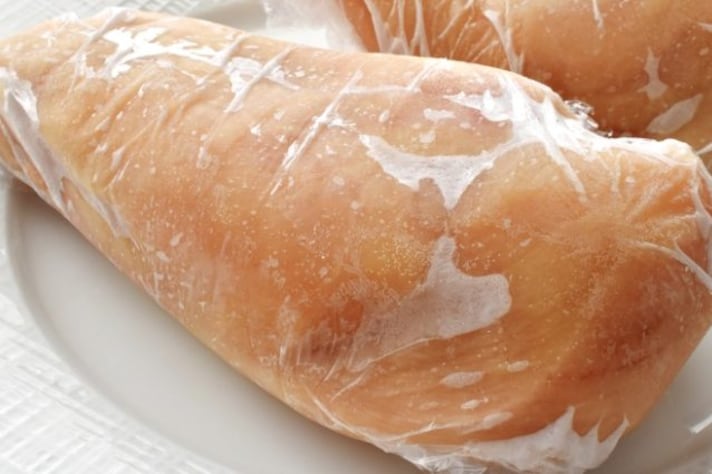
It’s 6 p.m., dinner’s supposed to be in an hour, and you’re staring at a rock-solid block of frozen chicken. Do you run hot water over it? Leave it on the counter and hope for the best? (Please don’t.)
Thawing chicken can feel like one of those small kitchen tasks you can improvise — until it isn’t. The truth is, how you defrost poultry matters just as much as how you cook it. Done right, thawing keeps your chicken safe, juicy, and evenly cooked. Done wrong, it can invite bacteria and ruin your dinner plans.
The method you use depends on the cut:
- Whole chickens and large pieces (like crowns or bone-in breasts) need more time and should thaw slowly in the refrigerator.
- Smaller cuts — boneless breasts, thighs, or ground chicken — can be thawed safely in cold water or even in the microwave if you’re short on time.
What you should never do: thaw chicken on the counter at room temperature, or in a bowl of hot water. Both create a perfect breeding ground for bacteria.
How to Thaw Chicken in the Refrigerator
The refrigerator method is the safest and most foolproof way to thaw chicken — though it requires a little planning. Think of it as the “set it and forget it” option. You will need about 24 hours for every 2 pounds of chicken.
Place the chicken in a dish or container to catch any drips and let it thaw on the bottom shelf of the fridge. A whole bird can take up to two full days to defrost completely, while a couple of pounds of boneless breasts will usually thaw in about a day. Once thawed, chicken can stay in the refrigerator for another one to two days before you cook it — giving you some flexibility with timing.

How to Thaw Chicken in Cold Water
If you need dinner on the table tonight and forgot to move the chicken from freezer to fridge, cold water is your next best option — quick, effective, and still safe. Seal the chicken in a leak-proof zip-top bag (so no water seeps in). Submerge the bag in a large bowl of cold water — never hot.
Change the water every 30 minutes to keep it cold. You can even toss in a few ice cubes to maintain a safe temperature.
Depending on the size, thawing can take: about 1 hour for ground chicken or small pieces, 1–2 hours for a few boneless breasts and 2–4 hours for larger quantities or bone-in cuts. Once thawed, cook the chicken immediately. Because it’s been sitting in a temperature range that bacteria love, you shouldn’t refrigerate it again before cooking.
How to Thaw Chicken in the Microwave
The microwave method is the fastest way to defrost chicken — but also the most unpredictable. Some parts may start to cook while others are still icy, so this method works best when you’re planning to cook the chicken right away. Use your microwave’s defrost setting, if it has one, and if not, use 30% power and check every few minutes, flipping or rotating the chicken each time. Stop when the chicken is pliable but still cool to the touch. Microwave-thawed chicken must be cooked immediately, since parts of it may have warmed enough for bacteria to multiply.

How to cook Chicken From Frozen
No time to thaw at all? You can still cook chicken straight from the freezer, it just takes longer. Add about 50% more cooking time than what’s stated in your recipe. For example, if a roasted chicken usually takes 2 hours, expect around 3. Use this method for roasting, stews, or soups, where gentle, even heat ensures the meat cooks through safely.
Avoid pan-frying or sautéing from frozen; the outside will brown long before the inside is cooked, leaving you with uneven texture and potentially unsafe results. If using a slow cooker, start on the high setting to bring the temperature up quickly, then reduce to low once the chicken is hot throughout.
Quick Tips for Safe Thawing
- Always wash your hands after handling raw chicken and clean any surfaces it touches.
- Never refreeze raw chicken that’s been thawed in water or the microwave.
- If you’re unsure whether it’s fully defrosted, check the thickest part with your finger: it should feel pliable, with no icy spots.
;Resize,width=767;)
